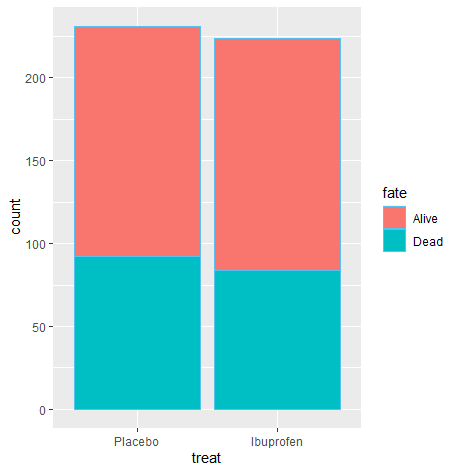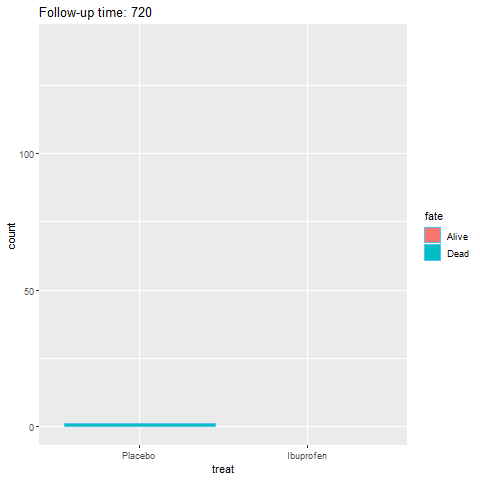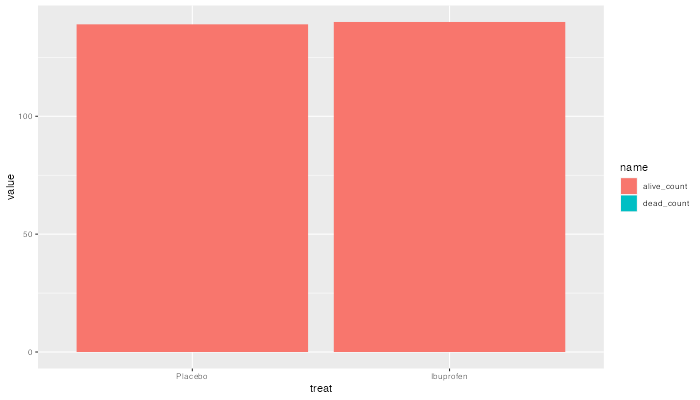PTS390
Reputation: 43
Animated reducing bar chart with gganimate
I have this basic plot of the Bernard dataset, that shows the mortality status by treatment.
library(tidyverse)
library(pubh)
Bernard %>% select(fate, treat, followup) %>%
ggplot(aes(x = treat, fill = fate)) +
geom_bar(stat = "count")
I would like an animated plot that adds the variable followup (1-720 hours) that runs backwards and shows how the count is affected.
Of course, this only affects the population of people who died (i.e. reducing their count), still I am interested in the concept, not so much the output.
I tried transition_reveal():
libary(gganimate)
Bernard %>% select(fate, treat, followup) %>%
ggplot(aes(x = treat, fill = fate)) +
geom_bar(stat = "count") +
transition_reveal(-followup) +
labs(title = "Follow-up time: {-frame_along}"
Upvotes: 0
Views: 118
Answers (1)

Jon Spring
Reputation: 66765
I'd suggest using some preprocessing to turn your "flows" data points (recorded deaths) into a "stock" (current counts of living participants). There's probably a more concise way to go about this but I hope it's clear what's happening:
library(tidyverse)
Bernard %>%
count(treat, fate, followup) %>%
mutate(status = n * if_else(fate == "Alive", 1, -1)) %>%
group_by(treat) %>%
arrange(-followup) %>%
mutate(alive_count = cumsum(status),
dead_count = max(n) - alive_count) %>%
ungroup() %>%
select(treat, followup, alive_count, dead_count) %>%
complete(treat, followup) %>%
fill(ends_with("count")) %>%
pivot_longer(alive_count:dead_count) %>%
ggplot(aes(treat, value, fill = name)) +
geom_col() +
transition_manual(-followup)
Upvotes: 2
Related Questions
- how to set flash_message correctly in codeigniter?
- Update and flashdata message not working on CodeIgniter
- codeigniter flash message not working
- How to pass messages in codeigniter?
- Display custom messages in CodeIgniter
- Codeigniter session flashdata not showing correct message
- How to set flash message
- Codeigniter Flashdata - Not Displaying My Message
- Displaying Message
- CodeIgniter: Display Pop up message


